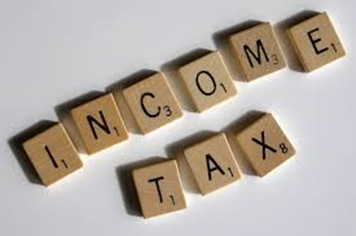
(Image source: pixabay.com)
In the world of financial engineering and exotic investment products, bank Fixed Deposits (FDs) still remain one of the sought-after investment avenues.
However, when you invest hard-earned money to clock a better rate of return, it is important pay attention to the following factors:
-
Issuer – The financial health of the issuer (or the issuing bank) is of prime significance for the safety of your capital. Taking undue risk for want of higher returns may not be a prudent approach. You ought to judge the credibility and financial strength of the issuer.
Therefore look for a respectable promoter history and decent credit grade (with a stable outlook) from rating agencies –– although bank FDs unlike corporate FDs are not really dependent of ratings; they are regulated by the Reserve Bank of India (RBI).
-
Rate of interest – While the interest rate on bank FDs vary across banks, care should be taken not to get lured by the ones offering an extraordinarily higher rate than the market rate, otherwise you would risk your capital.
Stories of some co-operative banks offering an unusual higher rate of return and then going bust are ample. So, learn from them, and remember that with higher returns comes high risk.
Interest Rates on Domestic Bank FDs*
Bank |
Tenure |
Tax Saver FD# |
| 6 months (%) |
1 Year (%) |
2 Years (%) |
5 Years (%) |
| State Bank of India |
6.35 |
6.40 |
6.60 |
6.75 |
| HDFC Bank |
5.75 |
6.85 |
7.00 |
6.00 |
| ICICI Bank |
6.00 |
6.60 |
6.75 |
6.50 |
| Axis Bank |
6.25 |
6.90 |
6.90 |
6.90 |
| Kotak Mahindra Bank |
6.50 |
6.80 |
6.70 |
6.25 |
| HSBC Bank |
5.00 |
5.00 |
5.00 |
NA |
| Standard Chartered Bank |
7.00 |
6.90 |
6.50 |
6.50 |
*for investment amount of less than Rs 1 crore
#Maximum investment allowed is Rs 1.50 lakh, eligible for tax deduction u/s 80C of the Income-Tax Act, 1961
Note: The table above is indicative, not exhaustive
(Source: Website of respective banks)
Your objective should be to yield a competitive rate of interest on your investment for the tenure you choose. Senior citizens of course do have an opportunity to earn 50 basis points (bps) over the regular rate (applicable for non-senior citizens).
-
Tenure/Maturity/Lock-in Period – This is the period for which you want to deploy your hard-earned money in a bank FD. And that should ideally be a function of when you need money. By gauging this, your liquidity needs will be addressed and you may not have to park more in your savings bank account, which yields a less rate of interest.
With regards to the lock-in, only Tax Saver Bank FDs have a mandatory 5-year lock-in. However, a Tax Saver bank FD helps reduce your tax outgo, as investments in these are eligible for deduction upto Rs 1.50 lakh under Section 80C of the Income Tax Act, 1961. The tax benefit is available only to resident individuals and Hindu Undivided Families (HUFs).
A Tax Saver Bank FD can be held in single or in joint name; but in case of the latter, a deduction under Section 80C of the Income Tax Act, 1961 will be available only to the first account holder –– who should possess a valid PAN (Permanent Account Number).
-
Investment Plans/Options – When you invest in bank FDs, you have plans/options such as quarterly compounding (i.e. reinvestment of interest option), quarterly pay-out of interest, and monthly payout. Choose wisely between these, depending on your cash-flow requirements.
For example, a senior citizen who would like to draw a regular source of income can possibly consider between monthly or quarterly interest pay-outs directly to his/her bank account.
On the other hand, for someone who is planning for a short-term financial goal (which is say 18 months), reinvestment of interest rather than regular pay-outs, may be better suited.
-
Premature withdrawals – Most banks give you the flexibility to withdraw the money from fixed deposits before maturity subject to a penalty (0.5% to 1.0% lower interest than the contracted rate) and other terms & conditions.
This is particularly useful during contingencies or emergencies when you are in dire need of cash.
However, note that for certain variant of bank FDs, premature withdrawal may not be permitted. In case the deposit is held jointly, all holders must sign a declaration, so that in the event of the death of one of the holders, the bank can pay the maturity proceeds prematurely to the survivors.
Likewise, in case of a Tax Saver Fixed Deposit, which is subject to a 5-year lock-in period, premature withdrawals are disallowed.
Hence, if you are looking at liquidity, check if premature withdrawals are allowed and conditions thereto.
-
Loan against FD facility – Most banks do offer a loan against your fixed deposit. This again is particularly advantageous when you need money during exigencies, but do not wish to liquidate your bank FDs.
You can get access to 80-85% liquidity of your fixed deposit amount. The interest rate for loan against FD is comparatively lower than for personal loans (which are unsecured loans). Note that interest is charged on actual amount utilised and for the tenure of utilisation. There are no EMIs or post-dated cheques required as in the case of other loans.
And the best part is, there are no prepayment charges on early closure for loan against bank FD.
Tax implications of investing in bank FD

(Image source: flickr.com)
In addition to the above factors, note that the interest earned on bank FD is taxable under the Income Tax Act, 1961. As per the prevailing rules, tax is deducted at source by the bank.
The rate for Tax Deduction at Source is 10% if PAN is furnished, and if not, then 20%. No surcharge or cess is levied over and above this basic rate.
TDS with respect to interest earned on your bank FD is deducted on the basis of the total interest projected on the aggregate of your bank FD for the financial year. This is in accordance to Section 194A of the Income Tax Act, 1961.
If the total projected interest in a financial year crosses the threshold limit, which is currently Rs 10,000 for non-senior citizens, TDS is deducted proportionately from the existing fixed deposits at the time of interest application.
For senior citizens, the union budget 2018 has increased the exemption of interest income on deposits with banks (includes fixed deposits) and post offices from Rs 10,000 to Rs 50,000. Thus, TDS will not be deducted for senior citizens, unless it crosses this new limit.
Therefore, when you invest in bank FDs also assess the post-tax returns. In case, you have no other income apart from interest income in order to avoid TDS, you can submit a declaration under Section 197A of the Income Tax Act in Form 15-G (for general or non-senior citizens) or Form 15-H (for senior citizens), as applicable.
Who should invest in a bank FD?
A conservative investor who is averse to taking risk, want to park money for the short-term, looking for liquidity, want to plan for contingency needs, a bank FD is worthy option.
For tax planning too, a Tax Saver Bank FD may be considered along with other assured return tax saving investment avenues viz. 5-Year Post Office Time Deposit, Public Provident Fund, National Savings Certificate (NSC), and Senior Citizen Saving Schemes (SCSS), all suitable for risk-averse investors.
A bank FD can help you securely compound your hard-earned money, provided you have given it enough thought.
Investments in bank FD can be done online, i.e. through internet banking or mobile banking––—from the comfort of your home/office/ or wherever you are–––or even by physically visiting the nearest bank branch.
But note…
Bank FDs, compared to mutual funds, are tax inefficient.
[Read: Bank FD Vs. Mutual Funds: Which Is Better?]
If you are willing to take market-linked risk, mutual funds can not only help you generate relatively superior tax-efficient returns, but even counter inflation better.
However, you need to invest in mutual fund schemes wisely taking cognisance of your age, income & expenses, asset & liabilities, your risk profile, investment objectives, financial goals, investment time horizon, among a host of other factors so that the investment portfolio is well-aligned.
And selecting winning mutual fund schemes is the key, whether you investing lumpsum and/or through Systematic Investment Plans (SIPs).
[Read: All You Need To Know About SIPs]
Want to learn step-by-step how to pick winning mutual funds? I recommend you download this guide:
10 Steps to Select Winning Mutual Funds

In it you will learn:
-
Why is it necessary to hold winning mutual funds
-
How to compare performance of mutual fund schemes
-
What to look for in a fund’s portfolio
-
How to judge the competence of the fund house
-
How to analyse fund managers skills
-
Steps to build a solid mutual fund portfolio
Download the valuable guide right away!
Happy Investing!
Add Comments